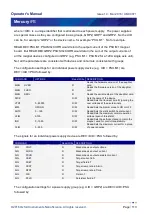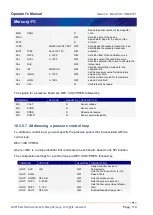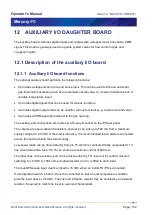
Operator's Manual
Issue 14
/
Mar 2016 / UMC0071
Mercury
iPS
©2016 Oxford Instruments NanoScience. All rights reserved.
Page
127
If an excitation current is required, the sensor and a reference resistor (R44 or R45) are
connected in series. Digital to analogue converters (DACs) U24 and U25 generate an upper
and lower demand voltage. The upper voltage is buffered by U10 and applied to the upper end
of the sensor resistor. The lower voltage is buffered by U15 and applied to the lower end of the
reference resistor. The same current thus passes through the sensor and the reference resistor.
U13 and either U14 or U16 measure the voltage across the reference resistor and pass these
feedback signals back to U10 and U15. This ensures that the voltage across the reference
resistor is exactly equal to the difference between the output voltages of U24 and U25.
U11 and U7 measure the voltage across the sensor resistor. The outputs of these devices are
passed to the inputs of a 24-bit analogue to digital converter (ADC). The ADC uses an accurate
4.096V reference for this measurement. The measurement is not ratiometric and its accuracy
depends primarily on the accuracy of the voltage reference (ADR444B =
0.05%).
The reference resistors are 2kohms and 80kohms. Depending on the excitation current, the
resistor and gain factor are chosen so that the ADC input voltage is in the optimum range.
The sensor voltage is:
Vsensor= Vref x ADCnorm/ADCgain
Where:
ADCnorm
is the ADC reading normalised to the range 0 to ±1 V.
ADCgain
is the gain setting of the ADC.
The temperature of the sensor to heater connection is measured to provide thermocouple
correction.
For thermocouples, the excitation DACs are set to a middle value to correctly bias the sensor
input away from the voltage rails. U10 and U15 are switched ON.
















































